Guns of the Decades - 1960s: Colt 607 - Colt’s First AR-15 Carbine

Welcome to the Guns of the Decades. In this article series, we’ll pick a firearm from a decade, and briefly talk about where it was at the time. It’s not meant to be an all-encompassing detailed record of the firearm or a claim that it was the best firearm of the decade. It's a fun read about a gun that you may have forgotten about or one that may have been lost in time.
In this week’s article, the decade is the 1960s, and the firearm is the Colt 607. The 607 is an incredibly rare firearm. It was Colt’s first attempt at the carbine. The complete history is too much for me to summarize in this blog post, but we can discuss and reflect.
Exact dates are kind of hard to nail down, but all online clues lead to the 607 being developed in 1965. Hit songs like “Papas Got a Brand New Bag” by James Brown, and “I Can't Get No Satisfaction” by the Rolling Stones were playing through the radios of the finest automobiles ever to leave Detroit. Radios were turned up via big chrome knobs. Air conditioning was an optional feature in a lot of cars. The newspapers covered the Vietnam War.
The AR-15 and its military derivatives that we all know and love today were as far from the Colt 607, as a 2024 Mustang is away from a 1965 Mustang.
The Armalite AR-15 rifle had been introduced just 6 years earlier in 1959. Armalite sold the rights to the AR-15 to Colt in 1959. At this point in time, Colt was the sole producer of the AR-15. It was not like modern times when many different companies were making AR–15 variants, it was all Colt. Note also that I'm referring to it as the AR-15. This time period was before any military adoption of the platform, so the AR in AR-15 stood for Armalite Rifle. Note also that our modern sporting rifles are commonly referred to as AR-15s, but aren't truly the same AR-15s as designed in 1959, because they lack the selectable fire option among other things.
At the time, the idea of a small and nimble rifle capable of shooting an intermediate cartridge in select fire was a very new concept. In fact, the first firearm to have this kind of capability was introduced only around 20 years earlier in World War 2, the STG44.
In 1964, the AR-15 was accepted by the U.S. military, and given the name M16. It had a fixed stock and a 20-inch barrel. It was a very long firearm by today’s standards. I’d like to think the great minds of the era could tell that a shorter version would be incredibly handy and began prototyping the Colt 607.
Around 1965, development began on the Colt 607. At the time, aluminum was a pretty new material. It was considered to be a “space age” material and hadn’t been as widely adapted as it has been today. Up until this point in time, most firearms were constructed of good old wood and steel. SMGs firing pistol caliber cartridges had been introduced at the time and used, but a lightweight, short-barreled, plastic-covered, aluminum-framed firearm shooting an intermediate small caliber high velocity cartridge must have been almost incomprehensible.
Prototyping firearms in 1965 was a completely different animal than the way we design things now. In today’s day and age, firearms can be modeled via sophisticated computer algorithms. We also have the huge benefit of the library of many, many lessons learned from firearm designs of the past. In 1965, they had gut feeling, and trial and error. The Colt 607 was a trial-and-error firearm. Only around 50 were made. From what I understand, each one of the 50 was hand-made and differed slightly. Let’s take a look at some of the 607’s design features, and how they differ from a modern AR-15.
The firearm featured a folding stock that was very unconventional by today’s standards. It had two rails the stock slid on. The firearm’s lower receiver had to be modified to accept the lower rod the stock slid on. I’m sure this design was incredibly strong and sturdy, but manufacturing it would most likely be a chore. I’m sure the additional rail increased weight as well. Modern AR-15s utilize a single buffer tube that the stock slides on.
The buttstock latch was different. Rotating the latch in one direction enabled the stock to be extended or retracted, and rotating it in the other direction locked the stock. The latch was not held in the locked position via spring pressure like in modern designs. Additionally, I’m sure this would be slower to deploy from a collapsed position than modern designs.
At the time, Colt had a difficult time manufacturing a 30-round magazine. 20-round magazines were commonly used. The pistol grip was trimmed down to match a 20-round magazine. Ultimately the finger length of material that was cut off didn’t make a huge difference in stowability. Most modern designs feature full pistol grips.
The Colt 607 included a device called a moderator. It turned out that the 10-inch barrel caused some reliability issues, along with a lot of noise and concussion. The moderator tamed the noise and concussion to an acceptable level. It wasn't truly considered a suppressor when it was introduced. It allowed the firearm to have roughly the same noise and concussion as its full-length counterpart. Additionally, it provided some back pressure that increased reliability. Modern AR-15 derivatives don't feature a moderator.
Some things like the charging handle, magazine release, safety, and ping pong bolt release look to have remained the same after all of these years.
The handguard on each Colt 607 was a hand-trimmed version of the triangular handguard found on the M16 at the time. Oddly enough, some Colt 607s featured handguards trimmed at the front and some at the back. With only around 50 Colt 607s being produced, they must have been experimenting with the profile and width of the handguards, by choosing to chop off either the front or rear of an existing handguard. Ultimately, the triangular handguards were ditched altogether.
I’d love to say the firearm was embraced as the hot new piece of equipment and adopted with open arms. Unfortunately, we all know there are often reliability problems associated with new firearm designs.
The 10in barrel turned out to be too short for the direct impingement gas system, and the cartridge that was fired from the barrel. The shorter barrel length meant the .223 bullet didn't see the same velocity and effectiveness as seen in the 20-inch barrel variant. The early gas system and short barrel used in tandem on the firearm affected the reliability of the firearm, especially in adverse conditions like those found in Vietnam.
I’ve heard and read anecdotes from people carrying early M16s in the days of the Vietnam War, and they were generally considered to be weak and unreliable. Apparently, the firearms were issued without cleaning kits, lube, and the proper maintenance instructions. Some soldiers may have even been told the new firearms were new, and innovative enough that they never needed to be cleaned. This led to a lot of reliability issues. The powder in the cartridges used at the time wasn’t as clean burning and didn’t perform as well as the modern 5.56 round either. The Colt 607 was weaker due to the reduced cartridge effectiveness, and less reliable due to the shortened gas system than the M16. I’m not sure if its reduced size made the tradeoff worth it to the soldier carrying the firearm at the time.
Although the Colt 607 wasn't mass-produced, some still made their way to Vietnam to see combat. One apparently even has damage to its receiver, from being struck by a bullet in action. Hopefully, the soldier wielding the rifle lived to tell the tale and give feedback about their experience in theater with the experimental firearm.
The lessons learned from the Colt 607 project were applied to future Colt designs. Eventually, Colt would add some barrel length, and fine-tune their gas system. Additionally, they would find a better stock design that allowed for a rapid deploying, reliable buttock that wouldn't collapse if you forget to lock it. It was experiments like the Colt 607 that led to the eventual design and success of the M4.
These upgrades were carried into Colt’s next experimental platform, the XM177. The XM177 brought to light other deficiencies that were rectified with the M4. 60+ years later, people are still building, developing, and testing new variations of the short-barrel AR-15.
I personally like cars from the 60s a lot. If I could go out today and buy an honest reproduction of the 1969 Camaro, I'd be all for it. While I'm not able to buy a car I could take apart with a crescent wrench anymore, it’s really cool that we can buy historical replicas of firearms from the 60s. The historic replicas usually carry forward classic aesthetics and include decades of reliability enhancements. I think I might have to do a Colt Commando clone build now.
I want to give a big thank you to Ian McCollum of Forgotten Weapons, for allowing us to use photos of the Colt 607 from his video. These firearms and their photos are very rare, and I wouldn’t have been able to include them in this article if it wasn’t for his video. For more details on the Colt 607, check out Forgotten Weapon’s YouTube breakdown below.
I know some of you guys out there reading this may have been around at the time, or may have heard some second-hand anecdotes and stories from those that had used Colt’s in the time period. If you have any good stories, or if I got anything wrong, drop it in the comments. I’d love to read them.

Lifelong firearm enthusiast with a passion for shooting handguns. 12+ year concealed carrier. Shooting competition enjoyer.
More by Cameron H








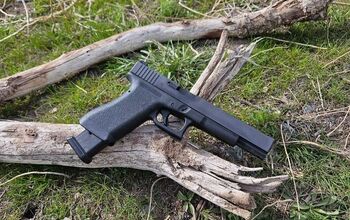
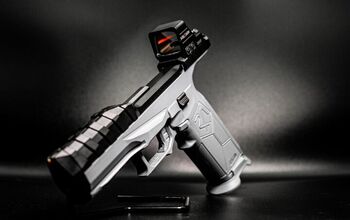
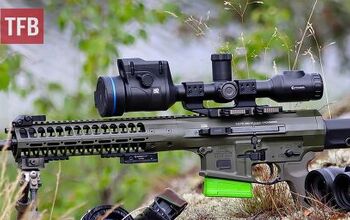


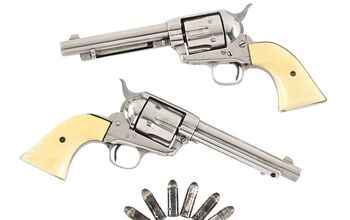
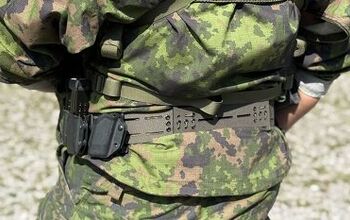



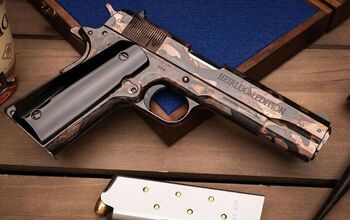

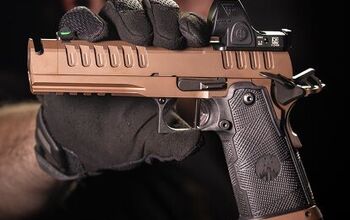
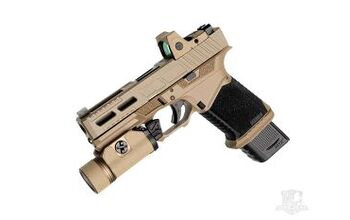

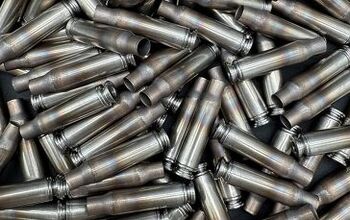

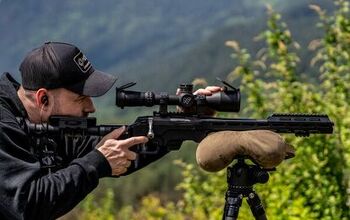
Comments
Join the conversation
I think, overall, your story is accurate. The one clarification I would recommend is with regard to very early M16 design and deployment. The Air Force received the first production Armalite/Colt AR15s in 1962. At least one other federal government agency received early production rifles. There is an iconic photo of Secret Service agent George Hickey wielding one in the second limo after JFK was shot. A batch of these early rifles was also sent to South Vietnam and issued to Army advisors serving there. The initial reports received on them were glowing, particularly with regard to the devastating wounds they created. This was attributed to the 1:14 twist barrels which barely stabilized the 55 grain projectile. However, this barrel twist was also deemed to be an Achilles's heel due to its sometimes erratic accuracy and inability to stabilize tracer rounds, so it was later replaced with a 1:12 twist barrel. The problems with the switch to BLC-2 powder had yet to arise, possibly because the relatively small number of personnel using the rifles had been properly trained and equipped to care for them. It was the follow-on mass production and rapid issue of rifles, combined with poor training standards, lack of suitable cleaning equipment, the tropical environment, and powder fouling issues that created the bad reputation for the "Mouse Gun". This brought public awareness and a Congressional investigation by the House Armed Services Committee's Special Subcommittee on the M-16 Rifle Program; specifically, the subcommittee chaired by Representative Richard H. Ichord (D-MO). It's an intriguing read which exposes the infighting among DoD leadership, Army organizations, private enterprise, and government arsenals that led to the debacle.
I carried the M 607 in combat in Vietnam as an adviser to the Vietnamese Rangers in 1972. I recently weapon as a gift from some military policy brothers. The weapon served me well in combat action in Quang Tri Province in April and May of 1972. Three years ago my son presented me with a duplicate of my original Colt M607.